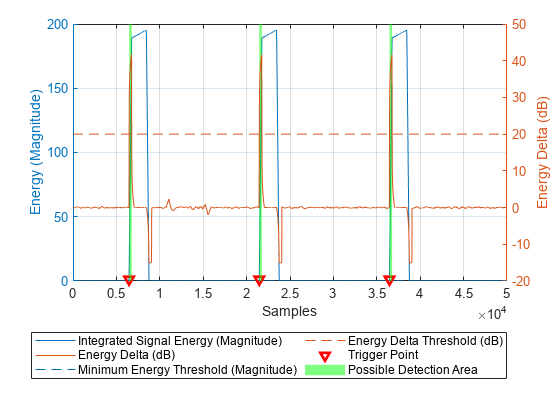plotDetectionSignals
Add-On Required: This feature requires the Wireless Testbench™ Support Package for NI™ USRP™ Radios add-on.
Description
plotDetectionSignals(
plots the energy detection signals while detecting live data of length
ed,length)length from the air using the energy detector
ed. The plot shows the integrated signal energy,
the energy delta in dB between adjacent integration windows, the
thresholds, and trigger points of the detection. Use the displayed
information to calibrate the thresholds of the energy detector for
triggering.
droppedSamples = plotDetectionSignals(ed,length)
Examples
Input Arguments
Output Arguments
Version History
Introduced in R2023b
